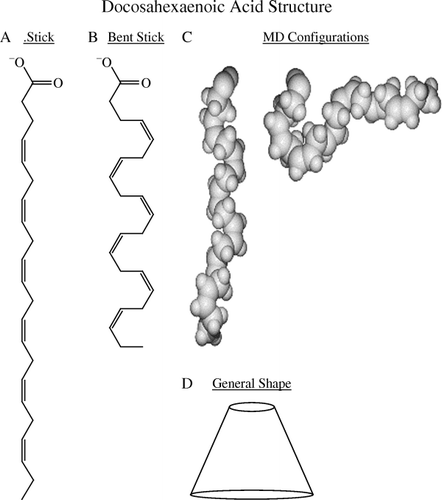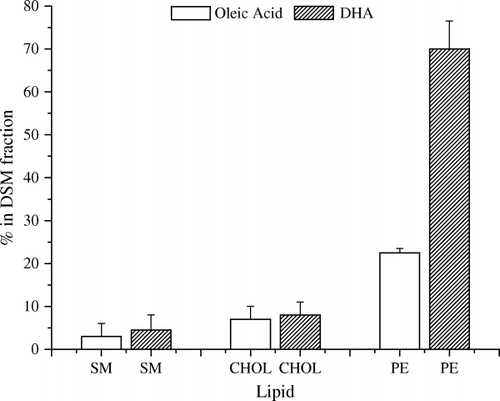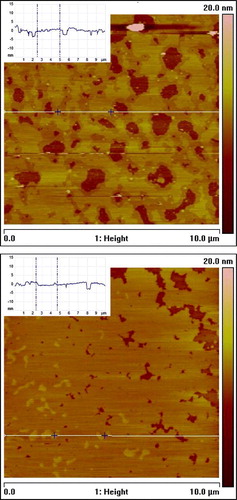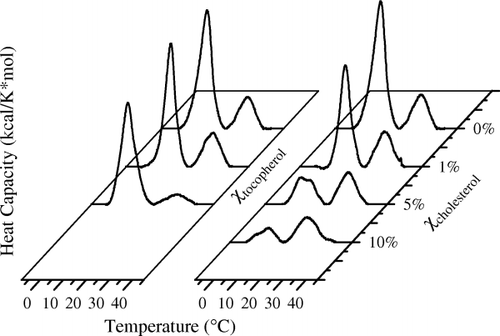Figures & data
Table 1. Human afflictions associated with low docosahexaenoic acid levels Citation3
Fig. 1. Docosahexaenoic acid structures: (A) conventional stretched stick; (B) bent stick; (C) two conformations from molecular dynamics (MD); (D) cartoon pyramid. (The author thanks Dr S Feller, Wabash College, for the molecular dynamics figures depicted in 1C.)

Table 2. Effect of docosahexaenoic acid (DHA) on some basic membrane physical properties Citation3
Fig. 2. Membrane fractions soluble in cold (4°C) Triton X-100 [detergent soluble membrane (DSM) fractions]. Membranes were composed of 1:1:1 (mol/mol/mol) of sphingomyelin (SM)/cholesterol (chol)/phosphatidylethanolamine (PE); the clear bars are from 16:0, 18:1 PE-containing membranes and the hatched bars are from 16:0, 22:6 PE-containing membranes. DHA: docosahexaenoic acid.

Fig. 3. Atomic force microscopy images of mica-supported bilayers composed of 16:0, 18:1 phosphatidylethanolamine (PE)/sphingomyelin (SM)/cholesterol (1:1:1, mol/mol/mol) (top) and 16:0, 22:6 PE/SM/cholesterol (1:1:1, mol/mol/mol) (bottom). Inserts present the height profiles corresponding to the horizontal white lines in the images.

Fig. 4. Comparison of the affinity of α-tocopherol and cholesterol for raft [16:0 sphingomyelin (SM)] and non-raft [16:0, 22:6 phosphatidylcholine (PC)] lipids. Membranes were made from a 1:1 (mol/mol) ratio of 16:0 SM and 16:0, 22:6 PC to which increasing amounts of either α-tocopherol or cholesterol were added. Differential scanning calorimetry cooling curves are depicted. The higher melting transition is due to a 16:0 SM-rich component, while the lower melting transition is due to the 16:0, 22:6 PE-rich component. This experiment indicates that cholesterol has a preferential affinity for SM (raft), while α-tocopherol prefers the DHA-PE (non-raft) components.
